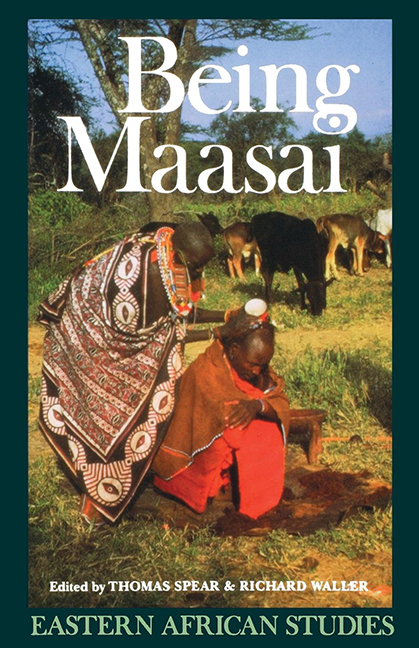Book contents
- Frontmatter
- Contents
- Maps, Figures & Illustrations
- Contributors
- Acknowledgements
- I Introduction
- II Becoming Maasai: Introduction
- III Being Maasai: Introduction
- 7 Becoming Maasai, Being in Time
- 8 The World of Telelia: Reflections of a Maasai Woman in Matapato
- 9 'The Eye that Wants a Person, Where Can It Not See?': Inclusion, Exclusion, and Boundary Shifters in Maasai Identity
- 10 Aesthetics, Expertise, and Ethnicity: Okiek and Maasai Perspectives on Personal Ornament
- IV Contestations and Redefinitions: Introduction
- V Conclusions
- Bibliography
- Index
7 - Becoming Maasai, Being in Time
from III - Being Maasai: Introduction
Published online by Cambridge University Press: 30 August 2017
- Frontmatter
- Contents
- Maps, Figures & Illustrations
- Contributors
- Acknowledgements
- I Introduction
- II Becoming Maasai: Introduction
- III Being Maasai: Introduction
- 7 Becoming Maasai, Being in Time
- 8 The World of Telelia: Reflections of a Maasai Woman in Matapato
- 9 'The Eye that Wants a Person, Where Can It Not See?': Inclusion, Exclusion, and Boundary Shifters in Maasai Identity
- 10 Aesthetics, Expertise, and Ethnicity: Okiek and Maasai Perspectives on Personal Ornament
- IV Contestations and Redefinitions: Introduction
- V Conclusions
- Bibliography
- Index
Summary
This chapter examines the process of becoming ‘Maasai’ for those that are born as Maasai within the Maasai area. They have to learn to identify themselves as such, giving a sense of purpose and meaning to their existence: an orientation that is bound up with an awareness of the continuity of their society. To become a Maasai is to develop a world-view with the concept of ‘ Maasai’ at its centre. The notion that as members of a territorial section (such as Keekonyokie, Kisongo, Matapato, etc.) they belong to a Maasai federation of sections, is of course an important feature of this world-view. However, this is part of a broader cosmology extending beyond territory and the erratic course of the seasons to a sense of being and becoming in time. This is especially true of their age system which structures their existence. With their age system intact, the Maasai have a culturally defined sense of time encompassing the life course of men, pervading aspects of womanhood, and linking directly with their oral traditions of earlier times. It is useful at this point to outline this system using a series of models that apply to different aspects of the process of ageing in Maasai.
Models of the Maasai Age System
In describing any system of age-organization, it is necessary to distinguish between age grades and age-sets. Age grades are the successive statuses to which individuals are ascribed in the course of their lives. An age-set comprises all those within a broad range of ages who are formed into a group of peers with their own separate identity. Maasai women do not belong to age-sets, but at marriage they are in effect promoted to a higher age grade. All Maasai men belong to an age-set following their initiation, and with their peers they pass as a body from one age grade to the next. If one imagines a queue climbing up a ladder, then this replicates the age system, with each successive climber representing an age-set and each rung an age grade (Spencer, 1976:153-154). Among the Maasai, climbing onto the bottom rung of the ladder represents initiation for individual youths as they become members of their age-set, and thereafter they climb together as an age-set. Towards the top of the ladder, the leading climber represents the oldest surviving age-set.
- Type
- Chapter
- Information
- Being MaasaiEthnicity and Identity in East Africa, pp. 140 - 156Publisher: Boydell & BrewerPrint publication year: 1993

